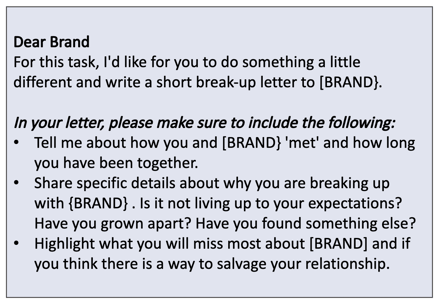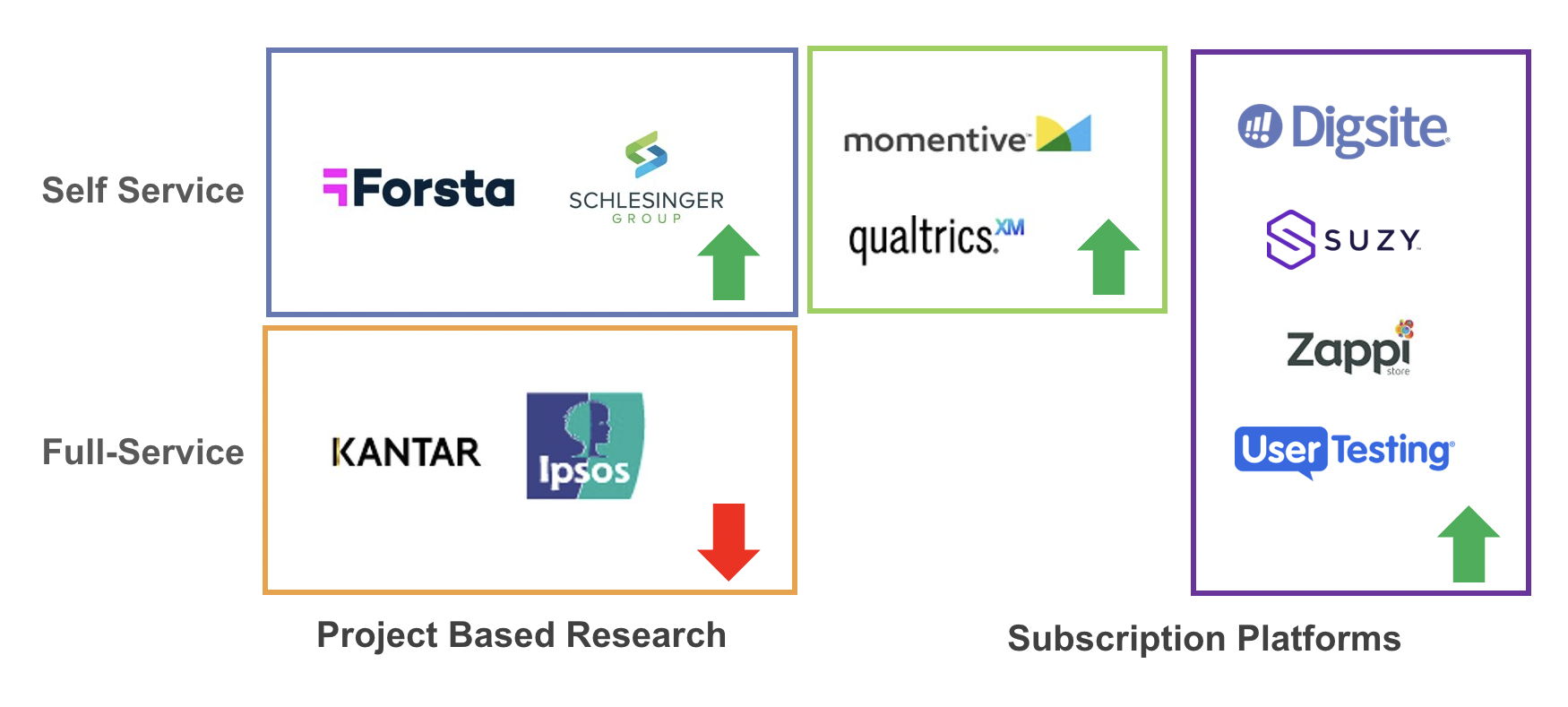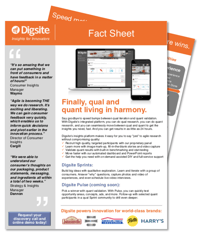If there was one word to describe 2021, it would be unpredictable. Whether you got a vaccine, left your job, went on vacation, or were impacted by supply chain issues, we experienced changes that affected our personal and professional lives. Just when we thought we had mastered one challenge, another one would show up to shake things up yet again.
Given the ups and downs of the past 365 days (although it seemed much longer than that), Digsite has determined that there are six trends insights pros need to be on top of in 2022.
 We will talk about each of these trends, their context within our businesses, specific examples and tips on how insights pros can get ahead of the curve.
We will talk about each of these trends, their context within our businesses, specific examples and tips on how insights pros can get ahead of the curve.
If you’d prefer to watch our recent webinar that covers these trends in-depth, click here.
Trend #1: Learning Through Volatility
If you’ve been paying attention to the news, you’re probably familiar with charts showing consumer price inflation and the fluctuations that seem to happen from day to day. Businesses are trying to plan budgets and their priorities for the next year but are faced with volatility and uncertainty. This isn’t just dependent on external factors from the markets—consumers are also playing a major role as their interests and values change.
For example, cookware brand Williams Sonoma’s sales increased by 22% and are expected to stay steady in Q4 as families are entertaining for the holidays. On the other hand, crafting store Joann Fabrics is experiencing a decline since the crafting boom seen earlier in the pandemic has significantly slowed down.
What’s important for us to remember is that our plans (even the ones still in progress) can be impacted by market - or consumer-driven changes. A qualitative+quantitative combo approach can help your organization check the temperature of your project and build upon it as you learn (and avoid getting stuck). Iteration is key, so you can test, learn, iterate and build to meet the changing needs of the consumer. Our pro tip? Use iterative qual+quant learning to optimize as you build.
While conventional marketing focuses on market demographics or product attributes, using the Jobs-to-be-done framework can expose the root cause of human behavior. It’s essential to use the Jobs-to-be-done framework to better understand the functional, social and emotional dimensions that explain why customers make the choices they do. Our pro tip? Use “Jobs-To-Be-Done” to track relevance through market shifts.
Learn how you can innovate faster using Jobs-to-be-Done research in our new eBook here.
Trend #2: Crisis of Expectations
In the 2022 global consumer trends report by Qualtrics, they reported that 63% of consumers think businesses need to do a better job of listening to their feedback. Not surprisingly, customer service support and pricing are big issues, in part due to inflation and employee shortages. What consumers really need right now is compassion and understanding, and we can do more to help out our consumers.
For example, Dollar Tree recently announced that they’ll be increasing their prices from $1.00 to $1.25. Their hope is to expand product selections and offerings, although “One Dollar and a Quarter Tree” doesn’t have the same ring to it. In 2022, businesses will need to think about the expectations they want to set and the strategic impact they will have. Our pro tip? Integrate stories into your data collection.
 One way to accomplish this is to supplement behavioral insights with human engagement. Solid qualitative journey mapping can help reveal the emotional components of a consumer experience, and you’ll also be able to integrate stories into your data collection. There are other ways to get this done more quickly and efficiently than in-person focus groups or ethnographic research so you can make adjustments during challenging times. One activity that you can set up in a Digsite Pulse study is to ask consumers to write a “break up letter” to help understand their emotions and experiences.
One way to accomplish this is to supplement behavioral insights with human engagement. Solid qualitative journey mapping can help reveal the emotional components of a consumer experience, and you’ll also be able to integrate stories into your data collection. There are other ways to get this done more quickly and efficiently than in-person focus groups or ethnographic research so you can make adjustments during challenging times. One activity that you can set up in a Digsite Pulse study is to ask consumers to write a “break up letter” to help understand their emotions and experiences.
Trend #3: Human vs. Tech
Many of us are working in a remote environment and a recent Gartner study revealed that 4 out of 10 employees would consider leaving the organization if they were forced to go back to the office. While this has created an array of new technology needs, it also creates a need for more human-centered work design. Technology and automation will continue to evolve in the ways that they help us and how our teams work together.
Artificial intelligence is used to manage supply chain initiatives for more than 60% of consumer goods enterprises. And robot delivery is expected to grow by 20% by 2028. These advances not only change the ways we can bring our products to consumers, but they will also impact how we do businesses in our organizations, the new products we build and how we market these products.
Automated tech is easy and helpful, but sometimes we just really need a human to help us when we need it. We should be thinking about our personas and the diverse audiences that we serve, and make sure that we include those audiences in the research work we do. Our pro tip? Use digital insight tools to communicate to unique personas.
Organizations can build empathy into their products by launching consumer-driven innovation sprints. This not only builds a process where you can systematize the testing of usability, design mockups, marketing and communications with multiple consumer touchpoints, but you can iterate and solve problems in a short period of time.
Trend #4: Research Tech Consolidation
Over the pandemic, full-service agencies saw reduced revenue, while DIY and subscription-based platforms increased their revenues (and are still rapidly growing). We’ve seen a lot of consolidation and acquisitions in the self-service industry.

So where is the market going? Insights pros are shifting away from agencies and project-based research.

What Digsite has been doing since day one is bridging the gap between the services that full-service agencies do and the speed and customization of DIY work. This model is flexible and affordable, so you can rapidly run qual + quant projects on your own or tap into our full-service capabilities to deliver results faster and more efficiently. Our pro tip? Find integrated platforms that will help optimize delivery.
Automated reporting and on-demand services continue to grow, and there’s value in having a partnership and platform that you can use across your entire organization. Finding those tech partnerships that allow you to expand your capabilities, utilize your best in-house capabilities and deliver consistent insights.
Trend #5: Data Wrangling
According to IDC, the amount of digital data created over the next five years (64 zettabytes) will be greater than twice the amount of data created since the advent of digital storage. Organizations need to determine their strategy to integrate, analyze and act on this data.
In order to maximize all that data and address potential challenges, you and your team will need to understand the process and steps to get there.
- Model decisions through a framework, using intelligence and analytics to inform, learn from and refine decisions.
- Support and enhance human decision-making and, potentially, automate it using augmented analytics, simulations and AI.
- Consider what kind of data you need, what data you could exploit, and what pieces of the decision-making are best left to humans vs. machines.
- Determine the collaborations that are critical, rather than what you can manage.
Many tools and platforms can help analyze and pull together all the social intelligence out there, which can better help us understand these trends and how they fit into our businesses. Our pro tip? Empower your team to drill deeper.
Using platforms that quickly analyze and display data gives your team more time to dig into interesting insights and report back to senior management. Tech subscriptions with flexible services can help you move faster and get closer to your end goals.
Trend #6: Insights Security
Hacks, ransomware and data privacy dominated cybersecurity in 2021. These threats relate to our insights and research work whether you realize it or not. Platforms like Digsite have to pass security audits each year and we also have cyber security policies and cyber liability insurance in place. Requirements have ratcheted up significantly in 2021 to protect your employees, customers, contractors and independent consultants. From two-factor authentication to vendor approvals, the process is getting more and more confusing.
Some big privacy changes in 2021 included:
- Apple: Users can opt out of tracking, certain data collection
- GDPR: Revised cookie policies for explicit consent
- Google: Stopping use of third-party cookies in Chrome by 2023
- Facebook: New methods of showing ads without relying on personal data.
These all affect our consumers, but that in turn affects our research samples. From a business standpoint and an insight standpoint, making sure that you have excellent sample quality is going to be critically important. Bad samples continue to be a challenge with the number of sample companies that have recently consolidated.
What your organization can really benefit from is a mix of AI- and human-driven validation. Our pro tip? Use qual data to validate sample quality. For example, Digsite has integrated identity validation, open-ended response validation and knowledge probs for participant validation. If you use a platform that has automated recruiting, you may not realize that some of these validation steps are tainting the quality of your sample. To prevent the exposure of participant privacy, Digsite also continues to amp up our levels of PII security and protections.
What’s most important to you and your organization in 2022? If you want to conduct more iterative research, increase human connection in your research, effectively combine qual +quant data, increase your usage of automated reporting/analysis methods or find a tech partner that enables flexibility, get in touch with us. Here’s to a bigger and better 2022!
Want to learn more about Digsite’s flexible capabilities?

See the ways you can use Digsite to understand user needs more clearly and answer the "why" questions to design, build and iterate better products and services. Download our Fact Sheet for a complete overview of Digsite.




